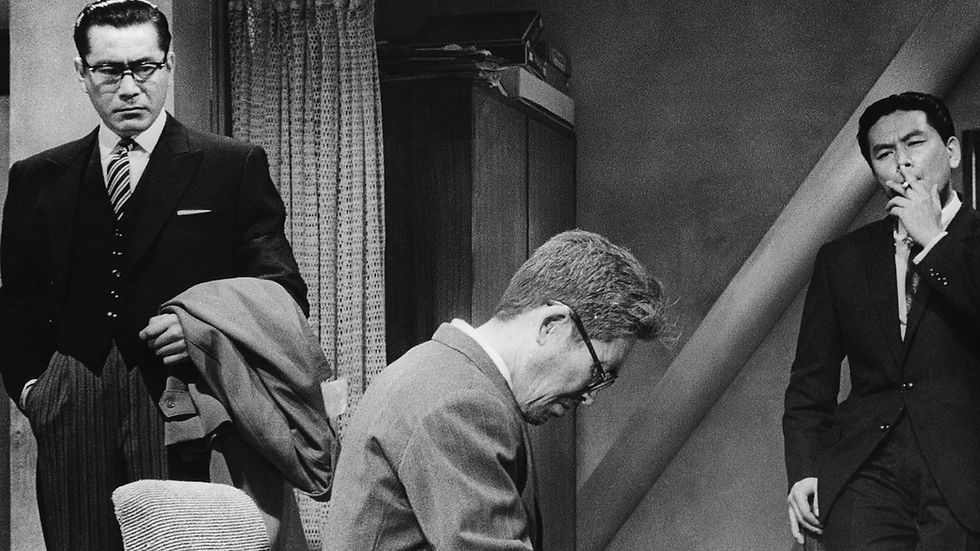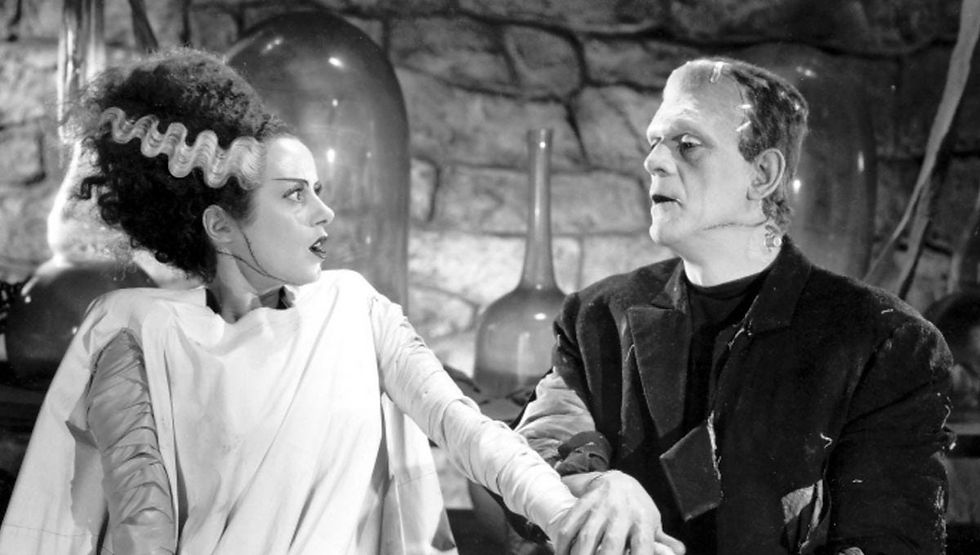What a Way to Go! (1964) - Ava Harper
- Ava Harper
- Sep 21, 2023
- 5 min read

Written by: Ava Harper, 05/04/2023
Production design and costume design are two of the most crucial aspects of filmmaking that contribute significantly to the visual appeal of a movie. In the black comedy film What a Way to Go! (1964), directed by J. Lee Thompson, the mingling between production design and costume immerses the audience into its world of camp.
The film follows Louisa May Foster, played by Shirley MacLaine, who recounts her "bad luck" as a wife, going through her four husbands she has had throughout her life. We begin the film in an entirely pink mansion, with a mourning Louisa leading a group of pallbearers, all of which are dressed in black. The audience immediately understands the tone of the film through this juxtaposition, a visually lavish and self aware satire. Foster sees a psychiatrist who occupies a modernist office, evident by the minimal color and clean lines. This design choice would be widespread for the time, as modernist interior design was popular from the 1930s to the mid-1960s.
Louisa begins telling the psychiatrist of her upbringing, being raised in a poor household by a mother desperate for money. She is coerced by her mother to marry Leonard Crawley, “son of wealth”, who Louisa resents. Instead she marries the local shop owner Edgar Hopper (played by Dick Van Dyke), who lives a simple life and is inspired by the transcendentalist works of Henry David Thoreau. The two live together in a small farmhouse, with mostly neutral and rustic colors to reflect their lack of wealth.
After being humiliated by Crawley, Hopper is determined to make a name for himself through his business. In finding this new financial success, Hopper neglects Louisa in their mansion. While their new home is beautiful, Louisa finds it lacks the charm of their modest farm. Hopper becomes so fixated on ousting his competitor that he dies from the overworking, leaving Louisa two million dollars in his will.
Louisa embarks to France, where she meets Larry Flint, an eccentric American artist in Paris. Flint lives amongst several other abstract artists, seen shooting balloons filled with paint and attached to a canvas. The two marry and live a bohemian lifestyle, with Flint embracing expression through art and rejecting wealth. She becomes a part of Flint’s art, now wearing dresses with vibrant colors and abstract images, “just another walking catalog” she says. The costume choices reflect the avant-garde style of art that was widely popular at the time, with vivid colors and abstract shapes. A specific wave of abstract art that took over France during the 50s known as Tachisme can be seen as a major influence for Flint’s art.
After Flint is killed by his own invention, Louisa misses her flight back to America. She meets the famed business tycoon Rod Anderson Jr. who offers her a lift on his private jet. Louisa compares her third marriage to living in a glamorous New Hollywood film, beginning a dream sequence that truly lets the costuming and production design shine. The tribute is made all the more impactful as its costumes were designed by Edith Head, known for her work on films such as All About Eve and Roman Holiday. Louisa rotates through numerous dresses, all of which are playful in their design. Whether it be her pink feathered dress or a sleek, Dior inspired gown, each outfit is pure luxury. This sequence also showcases one of the film’s most notable set pieces; a wine glass shaped bed. Overall, Louisa’s third marriage is a visual homage to the bright-colored, bombastic films of the 1950s.
In a small-town café, she meets Pinky Benson, played by Gene Kelly, who has performed nightly dressed as a clown. Though the crowds he performs to pay him little attention, Louisa falls in love and marries Benson. The couple then live on a quaint houseboat, imagining their life as a grand musical. The audience is taken to a giant soundstage, with MacLaine and Kelly bursting with energy as they dance and sing around the set. It’s a grand and over the top tribute to Hollywood musicals, such as Singin’ In the Rain and Gentlemen Prefer Blondes.
Similar to the rest of Louisa’s marriages, she is left unhappy in spite of the wealth accumulated by her new husband. Pinky becomes so self-absorbed from his newfound fame that he paints their Hollywood mansion unmistakably pink. As the couple enter a film premier, Pinky is trampled and killed by his adoring fans. The monochromatic production design is simplistic, visually showing Pinky’s growing ego through the complete takeover a single color has on the couple’s life. Louisa’s pink dress and hair combination are arguably the most famous look from the film. What makes this segment stand out is the sheer unapologetic use of color, swallowing up every aspect of the frame. The cautionary tale of Pinky Benson is straightforward, but effective through its use of visuals.
After her therapist hears Louisa's story, he proposes marriage, claiming to be the simple man she wants. She declines, which she declares is progress in her recovery. enters and helps Louisa down. She is shocked to find out that the janitor is Leonard Crawley, who lost everything after Edgar Hopper ruined his business. Leonard claims he is happy and credits Louisa and Thoreau for making his life "successful" because it is simple. The two remarry and live on a farm with their children. To conclude, Leonard strikes oil on their property but the couple decline to capitalize on this, as they are satisfied with their lives just the way they are.
What a Way to Go! tells the story of a woman longing for simplicity. She falls for men who share the sentiment, but they begin to crave success and wealth. Their yearning for success builds and builds until it kills them. The over the top sets and costumes visualize each husband’s greed. Hopper’s strive to outcompete Crawley leaves him worn out and empty, resembling his cold office. Larry Flint dedicates all his time and effort to the success of his art, creating a lifeless machine that will produce vibrant art for him and even turning his own wife into a piece for his exhibition. Roy Anderson Jr. is already incredibly wealthy, but dies while living on the farm with Louisa. Pinky Benson longs for fame and attention, cultivating a false image for himself and Louisa through color, and is killed by his adoring fans. Louisa never has the same desire; she is most herself living a simple life, not in the limelight. We as the viewer empathize with her view, as we see the chaotic and corrosive nature of wealth in the form of the exaggerated sets and costumes.
The film stands out among similar 1960s dramas, often attributed to its production design. The elaborate sets reflect their respective time periods and utilize popular art movements in their design. Each set is crafted to build the rich world of the characters and emphasizes the superficiality of each husband. Without the juxtaposition shown in Louisa’s consistent desire for simplicity, the sets may come across as garish or unnecessarily over the top. Through this contrast, the audience understands the message at the core of the film; wealth is a double-edged sword.
8/10






Comments